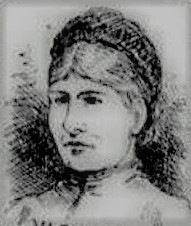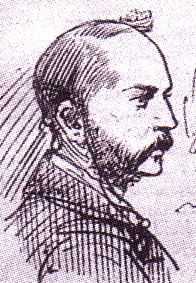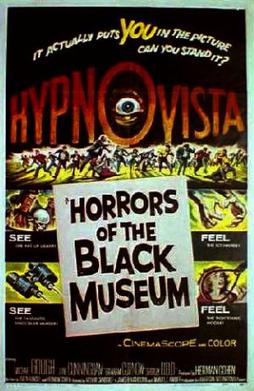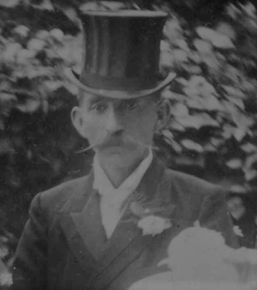
Scotland Yard is the headquarters of the Metropolitan Police, the territorial police force responsible for policing Greater London's 32 boroughs. Its name derives from the location of the original Metropolitan Police headquarters at 4 Whitehall Place, which had its main public entrance on the Westminster street called Great Scotland Yard. The Scotland Yard entrance became the public entrance, and over time "Scotland Yard" came to be used not only as the common name of the headquarters building, but also as a metonym for the Metropolitan Police Service (MPS) itself and police officers, especially detectives, who serve in it. The New York Times wrote in 1964 that, just as Wall Street gave its name to New York's financial district, Scotland Yard became the name for police activity in London.

The Metropolitan Police Service (MPS), historically and still widely known as the Metropolitan Police, serves as the territorial police force responsible for law enforcement and crime prevention within the ceremonial county of Greater London. In addition, it is responsible for specialised tasks throughout the United Kingdom, such as UK counter-terrorism measures and the protection of certain individuals, including the monarch and other members of the royal family, governmental officials, and other designated figures.

The Hammersmith nude murders is the name of a series of six murders in West London, England, in 1964 and 1965. The victims, all prostitutes, were found undressed in or near the River Thames, leading the press to nickname the killer Jack the Stripper. Two earlier murders, committed in West London in 1959 and 1963, have also been linked by some investigators to the same perpetrator.

John George Haigh, commonly known as the Acid Bath Murderer, was an English serial killer convicted for the murder of six people, although he claimed to have killed nine. Haigh battered to death or shot his victims and disposed of their bodies using sulphuric acid before forging their signatures so he could sell their possessions and collect large sums of money. His actions were the subject of the television film A Is for Acid.

Dennis Andrew Nilsen was a Scottish serial killer and necrophile who murdered at least twelve young men and boys between 1978 and 1983. Convicted at the Old Bailey of six counts of murder and two of attempted murder, Nilsen was sentenced to life imprisonment on 4 November 1983, with a recommendation that he serve a minimum of 25 years; this recommendation was later changed to a whole life tariff in December 1994. In his later years, Nilsen was imprisoned at HM Prison Full Sutton in the East Riding of Yorkshire.

The Black Museum is a radio crime-drama program produced by Harry Alan Towers, which was broadcast in the USA on the Mutual network in 1952. It was then broadcast in Europe in 1953 on Radio Luxembourg, a commercial radio station, and was not broadcast by the BBC until 1991.

Emma Elizabeth Smith was a murder victim of mysterious origins in late-19th century London. Her killing was the first of the Whitechapel murders, and it is possible she was a victim of the serial killer known as Jack the Ripper, though this is considered unlikely by most modern authors.

Frederick George Abberline was a British chief inspector for the London Metropolitan Police. He is best known for being a prominent police figure in the investigation into the Jack the Ripper serial killer murders of 1888.

Catherine Eddowes was the fourth of the canonical five victims of the notorious unidentified serial killer known as Jack the Ripper, who is believed to have killed and mutilated a minimum of five women in the Whitechapel and Spitalfields districts of London from late August to early November 1888.

Horrors of the Black Museum (1959) is a British-American horror film directed by Arthur Crabtree and starring Michael Gough, June Cunningham, Graham Curnow and Shirley Anne Field.

Jack the Ripper was an unidentified serial killer active in and around the impoverished Whitechapel district of London, England, in 1888. In both criminal case files and the contemporaneous journalistic accounts, the killer was also called the Whitechapel Murderer and Leather Apron.

The Whitechapel murders were committed in or near the impoverished Whitechapel district in the East End of London between 3 April 1888 and 13 February 1891. At various points some or all of these eleven unsolved murders of women have been ascribed to the notorious unidentified serial killer known as Jack the Ripper.

Joseph Lawende was a Polish-born British cigarette salesman who is believed to have witnessed serial killer Jack the Ripper in the company of his fourth victim, Catherine Eddowes, approximately nine minutes before the discovery of her body on 30 September 1888.
The history of the Metropolitan Police in London is long and complex, with many different events taking place between its inception in 1829 and the present day.
The Big Five was a nickname given to five superintendents in charge of the Criminal Investigation Department at Scotland Yard, the headquarters of the Metropolitan Police, from about 1906 onwards. The first five to be appointed were: Charles John Arrow, Paul Crane, Walter Dew, Frederick Fox and Frank Frost. These men and their successors, with their subordinate inspectors, regularly worked on high-profile murder cases through the British Isles. By the 1970s, the term was dropping from currency.

The Camden Town murder was a murder which took place in Camden Town, London, England, in 1907. Robert Wood, an artist, was tried for the murder of prostitute Emily Dimmock and acquitted after a defence by Edward Marshall Hall.

Detective Inspector Edmund John James Reid was the head of the CID in the Metropolitan Police's H Division at the time of the Whitechapel murders of Jack the Ripper in 1888. He was also an early aeronaut.
James Thomas Sadler, also named Saddler in some sources, was an English merchant sailor who worked as both a machinist and stoker. In 1891, the then-53-year-old was accused of killing prostitute Frances Coles. Sadler was placed under arrest, and a mob almost lynched him at the exit of a police station. Eventually, he was dismissed by police for having a solid alibi, and obtained compensation from a newspaper that had branded him as Jack the Ripper.
Thomas Hayne Cutbush was a contemporary suspect for the identity of the serial killer known as Jack the Ripper, as he was accused by the British press shortly after the 1888 murders.

The Charing Cross Trunk Murder took place in a third floor office at 86 Rochester Row in the City of Westminster in London on 4 May 1927.

















